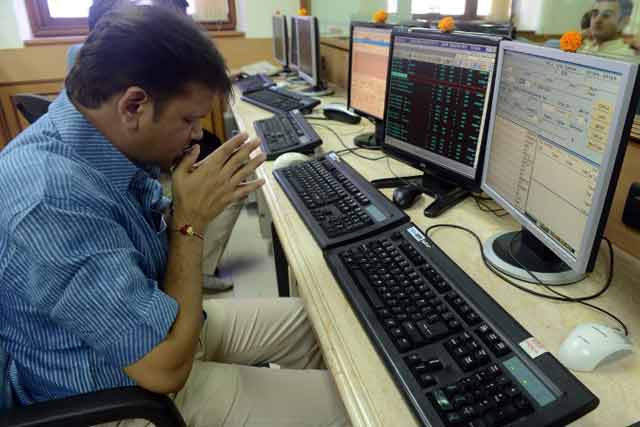The optimism about a sensible budget for the business community is firing the Indian equity markets, with both the benchmark indices hitting record highs today.
What fired the investor sentiment is an earlier comment from finance minister Arun Jaitley who said a return to fiscal prudence is the only way to a meaningful recovery.
“If you indulge in mindless populism you burden the exchequer…you convert yourself into a high taxation society. It does not work. Therefore if you have to follow a path of fiscal prudence, (you should) have a certain amount of discipline,” Jaitley has been quoted as saying in the media.
No wonder, expectations are soaring.
Brokerages and economists expect the budget to take a few steps in the right direction, though they remind that prime minister Narendra Modi has no magic wands to set things right overnight.
Here we list four expectations market players are riding high on.
Fiscal deficit: One of the key parameters that indicates the fiscal health of the economy, this is one figure the markets watch closely. This deficit happens when the government’s expenditure is higher than the revenue. Over the last few years, the UPA government’s indulgence in populist subsidies increased the expenditure, while an economic slowdown negatively impacted the revenue flow. Despite all this, Jaitley’s predecessor P Chidambaram had managed to contain the fiscal deficit for 2013-14 at 4.5 percent of GDP, which was much lower than the revised estimate of 4.6 percent. This has been done by rolling over subsidies to this year, which resulted in a spike in the deficit in the first two months of this year. So, experts expect the government to restate the fiscal deficit target for the current financial year, which has been set at 4.1 percent by Chidambaram. Barclays economists expect the government to revise the target to 4.5% and focus on improving the quality of the fiscal consolidation process in the medium term. What this also means is that there will be no increase in the government’s borrowing programme. This will be a relief for corporates, as higher market borrowing by the government would have crowded out the private sector.
Subsidy: Though Jaitley and Modi have been reiterating the need for bitter pills and hard decisions, the government is unlikely to have the political will to cut subsidies drastically in a drought year. However, the budget will definitely target the subsidies. A report by Care Ratings says the Budget will be looking at better targeting of the existing subsidy bill. The ratings agency doesn’t see the absolute levels of subsidy going down but it will target the beneficiaries and improve the delivery mechanism. These steps will make the scheme more effective. Some of the hard moves like increasing the railway fares (though partially rolled back later) have already been taken. This is fuelling expectation in the market that the government will finally get down to business.
Infra thrust: In the run-up to the elections, the BJP has made clear its focus on infrastructure development. Barclays expects the budget to announce “a more systematic and time-bound process to approve infrastructure projects to address supply-side concern”. This will help improve the investment climate in the country and encourage companies to increase their capital expenditure. There have also been media reports that the Railway Budget - to be presented two days ahead of the general budget - will give a roadmap for kickstarting Modi’s dream project of constructing a Diamond Quadrilateral of high speed bullet trains. There have also been talks of FDI being allowed in the sector. Modi’s thrust on urbanisation, like setting up of 100 smart cities, also bodes well for infrastructure. The market expects such projects to create more jobs, taking the country on to a high growth trajectory.
Tax reforms: Last but not least is the tax reform. Expectation is that the government will finally be bale to iron out the differences on the Goods and Services Tax front and at least give a concrete idea of what lies ahead for this important but long pending tax reform. According to Care, three other reforms in this area are removing retrospective tax legislation; eliminating surcharge on income tax; and reduction in minimum alternate tax (MAT). The retrospective tax pertains to tax imposed on capital gains from sale of assets. Imposition of this controversial tax had resulted in much heartburn among the foreign investors. The government has already expressed its intent to amend this. According to the ratings agency, surcharge on income tax was levied in the 2013 budget for short term revenue. “Eliminating the surcharge would generally reduce the tax burden of the citizens,” it noted. MAT is the tax imposed on companies that make profits and at the same time get deductions and exemptions to not pay the tax. “The rate of MAT levied has been considerably increased over the years. Reduction in the MAT rate would provide some relief to the stressed industrial sector,” Care said. However, the real game changer for the market will be a cut or complete removal Securities Transaction Tax, which is a tax on equity deals in the stock market.
)